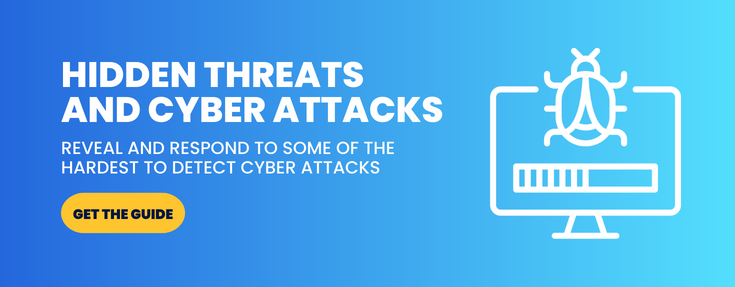As the digital age deepens, businesses and individuals alike are experiencing both the good and the bad that comes from emerging technologies. One of the negatives is an increase in cybercrime. According to PricewaterhouseCoopers’ Global Economic Crime Survey, cybercrime is the fastest-growing type of economic crime in the world toda>y.
On average, the costs of recovering from a cyber attack can be up to $20,000 for small businesses and $1.4 million to $13 million for larger organizations.
Just one cyber attack can devastate a business so badly that it might not ever recover. Nonetheless, some business owners still do not heed the threats that cybercrime pose.
Recent reports suggest that the cost of recovery for cybercrime is expected to reach US $6.1 trillion by 2021, making it one of the most lucrative crimes in the world.
Business owners and consumers alike must be more vigilant in their efforts to make themselves less susceptible to cyber attacks. To help stay abreast of these threats, we’ve compiled five of the most common trends in cybercrime to pay attention to.
Top 5 Cybercrime Trends
Trend #1: Phishing is Still Going Strong
Phishing refers to a type of cybercrime where fraudsters masquerade as familiar entities, such as your bank. They send you an email with the intent of collecting sensitive information like your bank account details.
Even though phishing is one of the oldest forms of cybercrime, it remains very popular among cyber criminals. This is because it’s simple, it’s cheap, and it works.
As phishing becomes even more strategic, web users are advised to not download any online material from untrusted sources. Another way they can protect themselves is to adopt multi-factor authentication to safeguard email addresses and login credentials.
Even though phishing is one of the most prevalent cybercrimes, it is also one of the easiest to stop. Since phishing relies on human error rather than complex coding, proper education can greatly reduce the number of instances. As such, businesses should educate their employees about phishing tactics and demonstrate how to avoid them.
Trend #2: Increasing Ransomware Attacks
Another popular type of cybercrime is ransomware. Ransomware refers to a kind of malicious software that blocks access to a computer until a certain amount of money is paid to the cyber criminal.
Advanced ransomware attacks can block out an entire organization from both their computer systems and networks. Unfortunately, this kind of cyber attack will not go away any time soon. In fact, it is expected to increase over the coming years, even against individuals.
The healthcare industry remains the number one target for ransomware attacks. Statistics show that 88 percent of all ransomware attacks are targeted at the healthcare sector. This trend will continue as long as systems with data stay under-protected, or do not practice adequate data backup.
Another noteworthy item is the use of ransomware attacks to distract from other forms of attacks on critical infrastructure. While ransomware blocks access to the computer’s systems, criminals can then target any internet-connected device, including cars and smart home devices. The internet of things (IoT) opens up many other avenues for hackers to terrorize consumers.
Businesses are advised to deploy next-level security measures for their internet of things applications, such as multi-factor user authentication, application shielding, and secure user onboarding.
Currently, ransomware attacks of this nature are not as prominent so many consumers do not consider the need to protect their cars, doorbells, and thermostats like they would their computer. However, these scenarios are very real and people should be prepared.
Trend #3: Protecting the Cloud
As more data moves to cloud-based services, cyber criminals are taking note and following suit. Unfortunately, most businesses wrongly assume their data is secure since it’s off-site. This is a crucial mistake. The security of off-site data can drastically decrease based on the level of protection that your cloud provider can offer. Measures must be taken to ensure all the data on the cloud is secure. To truly have security in the cloud, a business must have a well-secured application layer, especially with externally-facing API, mobile, and web assets. These items are prime targets for automated bot attacks.
This kind of cybercrime is almost impossible to detect using traditional security tools since they involve the use of legitimate usernames and passwords, not APTs and malware. Cloud security architects need to use tools that can detect the underlying behavior and intentions of app transactions, as that is what is required in order to combat automated malicious bots.
Trend #4: Digital Ad Fraud is On the Rise
Digital ad fraud is one of the most inconspicuous types of cybercrime. It affects more people every year, making it difficult for online content providers to generate revenue.
Estimates show that advertisers lose up to $19 billion each year due to fraud. This calculates to a loss of $51 million on a daily basis. The worst is yet to come as forecasts indicate that ad fraud will be a $44 billion industry by 2022.
Even though video is the most commonly affected form of content, online content providers should also guard their other assets.
On a positive note, law enforcement is finally taking ad fraud seriously. Last year, the Department of Justice announced a 13-Count indictment against eight men for various cybercrimes, including what the FBI termed as the biggest-ever fraud investigation.
Ad fraud primarily comes in the form of a hijacked or ad that redirects users to phishing pop-ups. This enables the fraudsters to commit identity and credit card theft. A criminal usually poses as a legitimate advertiser in this type of attack and targets insecure websites for their phishing schemes.
Any type of organization is susceptible to the cybercrime of ad fraud.
Trend #5: Cryptocurrency Cybercrime
While cryptocurrency hasn’t disrupted the financial world as expected, it remains a vital tool in a lot of ransomware schemes. The hacker threatens to release personal data if they are not paid in cryptocurrency, similar to a ransomware attack.
Since cryptocurrency offers a means of payment that is virtually untraceable, more cyber criminals prefer this type of exchange. Still, digital currencies are not a perfect solution for criminals. Bitcoin, for instance, is easily traceable. Additionally, the cryptocurrency market is still majorly illusive, making cashing out a costly and challenging endeavor.
The threat in cryptocurrency is not in how it is used, but rather, how it is created—a process referred to as mining. This process involves using numerous computers to solve complex mathematical equations. Since acquiring such a large number of computers can be difficult, criminals will often hack and remotely control peoples’ computers in order to harness their processing power. They usually achieve this through phishing or ad fraud, where they direct a user to an illicit website that then turns the user’s computer into a remote miner.
Combating Trends in Cybercrime
Cyber criminals are among the most refined types of thugs in the world. In order for their crimes to succeed, they must stay up-to-date with the most recent developments in the tech world. This requires a lot of learning and skill-harnessing.
For the regular person or business, keeping up with cyber criminals is a challenging endeavor. To help keep up, many are contracting the services of a professional cybersecurity company. These professionals combat the efforts of cybercriminals by beating them at their own game.
To learn more about how BitLyft protects its clients from cybercrime, contact us today.










